Complex Regional Pain Syndrome (CRPS) is a chronic condition characterized by intense pain and inflammation. Physical therapy plays a crucial role in managing symptoms and improving mobility. Early intervention is key to enhancing quality of life and reducing long-term disability. This protocol outlines evidence-based strategies to address pain‚ restore function‚ and promote recovery.
1.1 Overview of CRPS (Complex Regional Pain Syndrome)
Complex Regional Pain Syndrome (CRPS) is a chronic pain condition characterized by intense‚ burning pain‚ inflammation‚ and hypersensitivity‚ often affecting one limb. It typically follows trauma‚ injury‚ or surgery. CRPS is divided into two types: Type I (without nerve damage) and Type II (with nerve injury). Symptoms include swelling‚ skin discoloration‚ and limited mobility; The exact cause is unclear‚ but it involves nervous system dysfunction.
1.2 Importance of Physical Therapy in CRPS Management
Physical therapy is essential for managing CRPS‚ focusing on pain reduction‚ improving mobility‚ and preventing long-term disability. It helps restore functional abilities‚ enhances quality of life‚ and addresses psychological impacts. Early intervention can significantly improve outcomes‚ making it a cornerstone of CRPS treatment plans.

Assessment and Diagnosis in CRPS Physical Therapy
Accurate diagnosis and assessment are critical for effective CRPS management. A comprehensive evaluation‚ including clinical criteria‚ imaging‚ and patient history‚ guides personalized treatment plans and ensures targeted interventions.
2.1 Clinical Evaluation and Diagnostic Criteria
A thorough clinical evaluation is essential for diagnosing CRPS‚ involving patient history‚ physical examination‚ and assessment of symptoms. The Budapest Criteria‚ including pain‚ sensory‚ motor‚ and autonomic changes‚ guide diagnosis. Key criteria such as hyperalgesia‚ allodynia‚ and limited range of motion are evaluated. Clinical tools like pain questionnaires and functional tests are used to confirm CRPS and rule out other conditions‚ ensuring accurate diagnosis and targeted treatment.
2.2 Role of Imaging and Other Diagnostic Tools
Imaging techniques like MRI and bone scans help identify CRPS-related changes‚ such as bone resorption or inflammation. Nerve conduction studies and electromyography assess nerve function. Diagnostic tools like thermography and laser Doppler flowmetry measure skin temperature and blood flow asymmetry; These assessments aid in confirming CRPS diagnosis and monitoring disease progression‚ ensuring a comprehensive approach to treatment planning and management.

Exercise Protocols for CRPS
Exercise protocols for CRPS focus on gentle‚ pain-free movements to enhance mobility and strength. Techniques include desensitization exercises‚ range of motion activities‚ and graded loading to prevent flare-ups. These exercises are tailored to individual tolerance and progressed gradually under professional guidance.
3.1 Graded Motor Imagery and Progressive Loading
Graded Motor Imagery (GMI) and Progressive Loading (PL) are cornerstone techniques in CRPS rehabilitation. GMI involves visualizing movements to rewire the brain’s pain response‚ reducing sensitivity. Progressive Loading gradually introduces stress to affected areas‚ enhancing strength and tolerance without triggering pain. These methods‚ combined‚ foster neural plasticity and restore functional abilities‚ addressing both physical and psychological aspects of CRPS effectively.
3.2 Desensitization Techniques and Range of Motion Exercises
Desensitization techniques‚ such as tactile stimulation and temperature modulation‚ help reduce sensitivity and discomfort in affected areas. Range of motion exercises improve joint mobility and flexibility‚ preventing stiffness. These methods are often combined to address both sensory and motor challenges‚ promoting a gradual return to functional activities and enhancing overall recovery in CRPS patients.
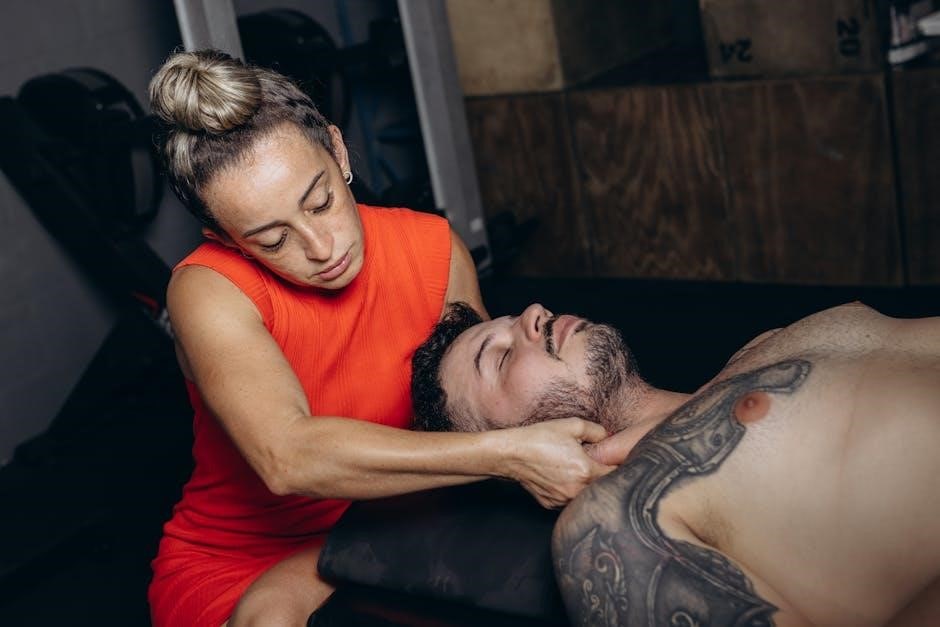
Pain Management Strategies in CRPS PT
Pain management in CRPS PT incorporates Cognitive-Behavioral Therapy (CBT) to address mental health aspects and strategies like assistive devices to reduce discomfort and improve functionality.
4.1 Cognitive-Behavioral Therapy (CBT) Integration
Cognitive-Behavioral Therapy (CBT) is integrated into CRPS physical therapy to address mental health challenges‚ such as anxiety and depression. By identifying and modifying negative thought patterns‚ patients learn to cope with pain more effectively. CBT helps reduce stress‚ enhance motivation‚ and improve adherence to rehabilitation programs‚ fostering a more positive mindset for recovery and long-term management of CRPS symptoms.
4.2 Use of Assistive Devices and Orthotics
Assistive devices and orthotics are essential in CRPS physical therapy to enhance mobility and reduce pain. Tools like splints‚ braces‚ and specialized footwear provide support‚ redistribute weight‚ and immobilize affected areas‚ preventing further injury. Customizable orthotics cater to individual needs‚ improving alignment and comfort. These devices promote functional recovery‚ enabling patients to perform daily activities with greater ease and independence‚ fostering overall therapy success.
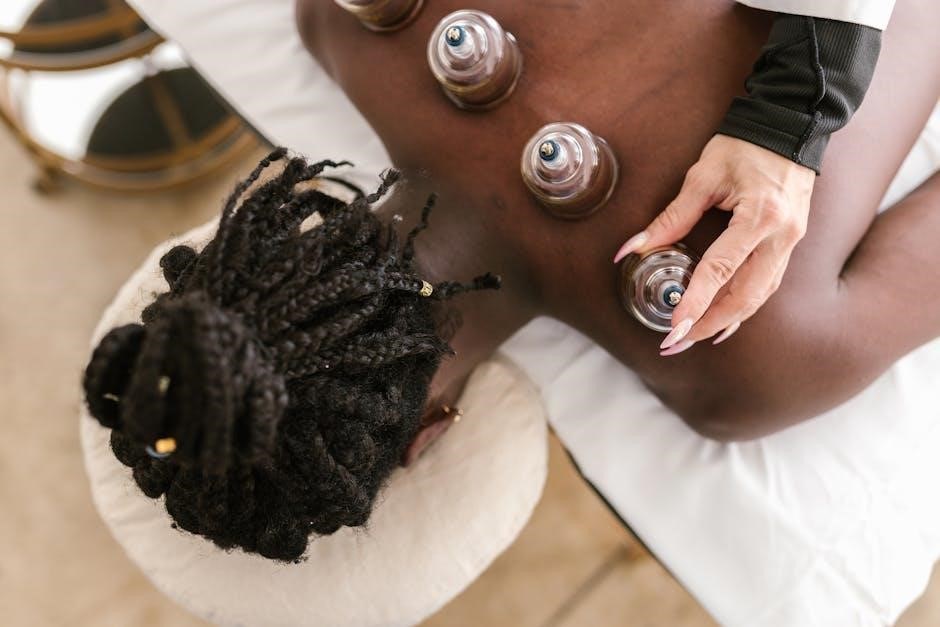
Adjunct Therapies in CRPS Rehabilitation
Adjunct therapies‚ such as hydrotherapy and electrical stimulation‚ complement traditional PT approaches. These methods enhance pain relief‚ improve circulation‚ and promote tissue repair‚ aiding overall recovery.
5.1 Hydrotherapy and Heat/Cold Therapy
Hydrotherapy‚ heat‚ and cold therapies are effective adjunct treatments for CRPS. Hydrotherapy improves mobility and reduces pain in a low-impact environment. Heat therapy relaxes muscles and enhances blood flow‚ while cold therapy reduces inflammation and numbs pain. These methods complement physical therapy by addressing discomfort and promoting circulation‚ aiding in overall recovery and patient well-being.
5.2 Electrical Stimulation Techniques (TENS‚ EMS)
Electrical stimulation techniques like TENS (Transcutaneous Electrical Nerve Stimulation) and EMS (Electrical Muscle Stimulation) are valuable tools in CRPS management. TENS reduces pain by interrupting nerve signals‚ while EMS enhances muscle strength and circulation. These non-invasive methods provide localized relief‚ reducing discomfort and inflammation. They are often combined with other therapies to support physical therapy goals and improve patient mobility and strength.
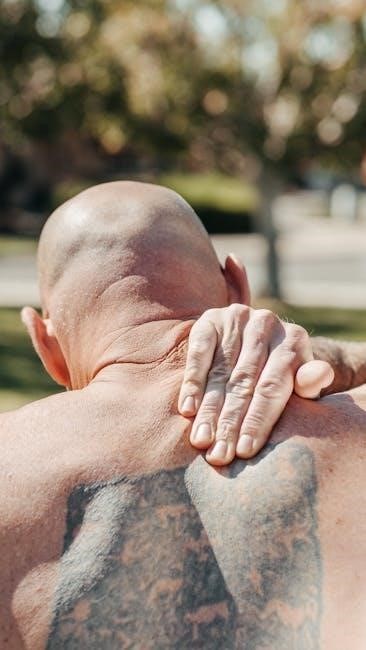
Progression and Adaptation of Therapy
Therapy progression involves tailoring interventions based on patient feedback and outcomes. Adjustments ensure continued improvement‚ promoting long-term recovery and enhanced functional abilities in CRPS patients.
6.1 Individualized Treatment Plans and Goal Setting
Individualized plans are tailored to each patient’s unique needs‚ focusing on specific‚ measurable‚ achievable‚ relevant‚ and time-bound (SMART) goals. Regular assessments ensure therapies align with progress‚ fostering optimal recovery and functional improvement in CRPS patients.
6.2 Monitoring Progress and Adjusting Interventions
Regular assessments and outcome measures track patient progress‚ ensuring therapies remain effective. Adjustments are made based on feedback‚ functional improvements‚ and pain levels. Tailoring interventions‚ such as exercises or modalities‚ optimizes recovery and addresses evolving needs‚ fostering a dynamic approach to CRPS management.
Special Considerations in CRPS Physical Therapy
Special considerations involve tailored approaches for unique patient needs‚ such as post-surgical rehabilitation or pediatric care. Personalized strategies ensure effective management of complex cases.
7.1 Pediatric and Geriatric CRPS Management
Pediatric and geriatric CRPS management requires tailored approaches due to age-specific vulnerabilities. Children may exhibit unique symptoms‚ while elderly patients often have comorbidities. Gentle‚ age-appropriate therapies and pain management strategies are essential. Multidisciplinary care‚ including physical therapy and psychological support‚ ensures comprehensive treatment. Early intervention and adapted exercises help improve mobility and quality of life in these populations;
7.2 Post-Surgical Rehabilitation for CRPS Patients
Post-surgical rehabilitation for CRPS patients focuses on restoring mobility‚ strength‚ and function while managing pain. Gentle exercises‚ pain management techniques‚ and psychological support are crucial. A multidisciplinary approach ensures comprehensive care‚ addressing both physical and emotional recovery. Personalized treatment plans aim to enhance recovery outcomes‚ reduce complications‚ and improve long-term quality of life for patients following surgery.
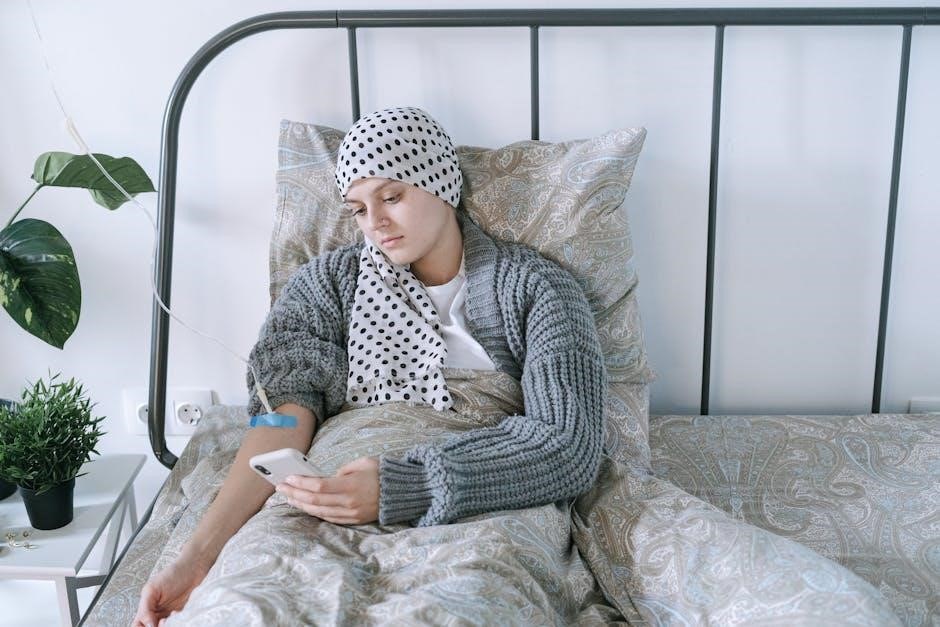
Psychological Support and Patient Education
Psychological support and patient education are vital in CRPS management. Cognitive-behavioral therapy helps address mental health challenges‚ while education empowers patients with self-management strategies and coping techniques.
8.1 Addressing Mental Health and Stress
Addressing mental health and stress is crucial in CRPS management‚ as chronic pain often leads to anxiety and depression. Cognitive-behavioral therapy helps patients cope with emotional challenges‚ while stress management techniques like mindfulness and relaxation reduce pain intensity. These interventions promote emotional resilience and improve overall well-being‚ enhancing the effectiveness of physical therapy and self-care practices.
8.2 Patient Education for Self-Management
Patient education is vital for empowering individuals with CRPS to manage their condition effectively. This includes teaching pain management techniques‚ proper posture‚ and home exercises to maintain mobility. Educating patients on lifestyle modifications‚ stress reduction‚ and activity pacing fosters independence and self-efficacy. Providing resources and encouraging a supportive environment helps patients adhere to their treatment plans and improve long-term outcomes through active participation in their care.
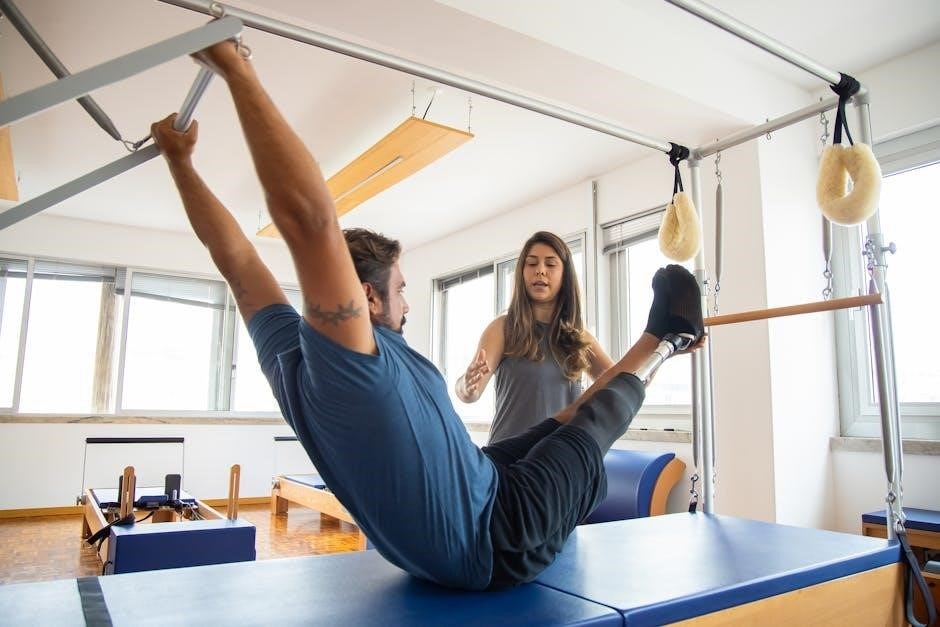
Monitoring and Measuring Outcomes
Regular monitoring of CRPS patients’ progress is essential to assess the effectiveness of therapy. Standardized assessments and outcome measures help track improvements and guide treatment adjustments‚ ensuring optimal results.
9.1 Outcome Measures and Assessment Tools
Outcome measures for CRPS physical therapy include pain scales‚ functional assessments‚ and quality-of-life questionnaires. Tools like the Visual Analog Scale (VAS) and SF-36 help monitor symptom severity and functional improvements. Regular assessments ensure interventions are effective and guide adjustments‚ focusing on pain reduction‚ mobility‚ and patient-reported outcomes to achieve personalized recovery goals and enhance overall well-being.
9.2 Long-Term Follow-Up and Maintenance
Long-term follow-up in CRPS physical therapy involves regular monitoring to prevent relapse and maintain functional gains. Patients are encouraged to continue home exercises and lifestyle modifications. Periodic assessments ensure sustained progress‚ while maintenance programs focus on promoting independence and managing residual symptoms. Ongoing support and education empower patients to adapt to changes and achieve lasting well-being.

Future Directions and Research in CRPS PT
Emerging technologies and multidisciplinary care are reshaping CRPS physical therapy. Research focuses on optimizing interventions‚ improving outcomes‚ and exploring innovative approaches to enhance patient recovery and well-being.
10.1 Emerging Trends and Technologies
Emerging trends in CRPS PT include the integration of virtual reality for immersive therapy‚ wearable technology for real-time monitoring‚ and telehealth for remote care. Advances in AI and machine learning enable personalized treatment plans and predictive analytics for better outcomes. Additionally‚ innovations in neuromodulation and regenerative medicine are being explored to enhance pain management and tissue repair‚ offering new hope for patients with chronic pain conditions.
10.2 Role of Multidisciplinary Care
Multidisciplinary care is essential in CRPS management‚ involving physical therapists‚ pain specialists‚ psychologists‚ and occupational therapists; This collaborative approach ensures comprehensive treatment‚ addressing both physical and emotional aspects of the condition. By integrating diverse expertise‚ patients receive personalized care that enhances functional recovery‚ reduces pain‚ and improves overall well-being‚ leading to better long-term outcomes and a higher quality of life.

